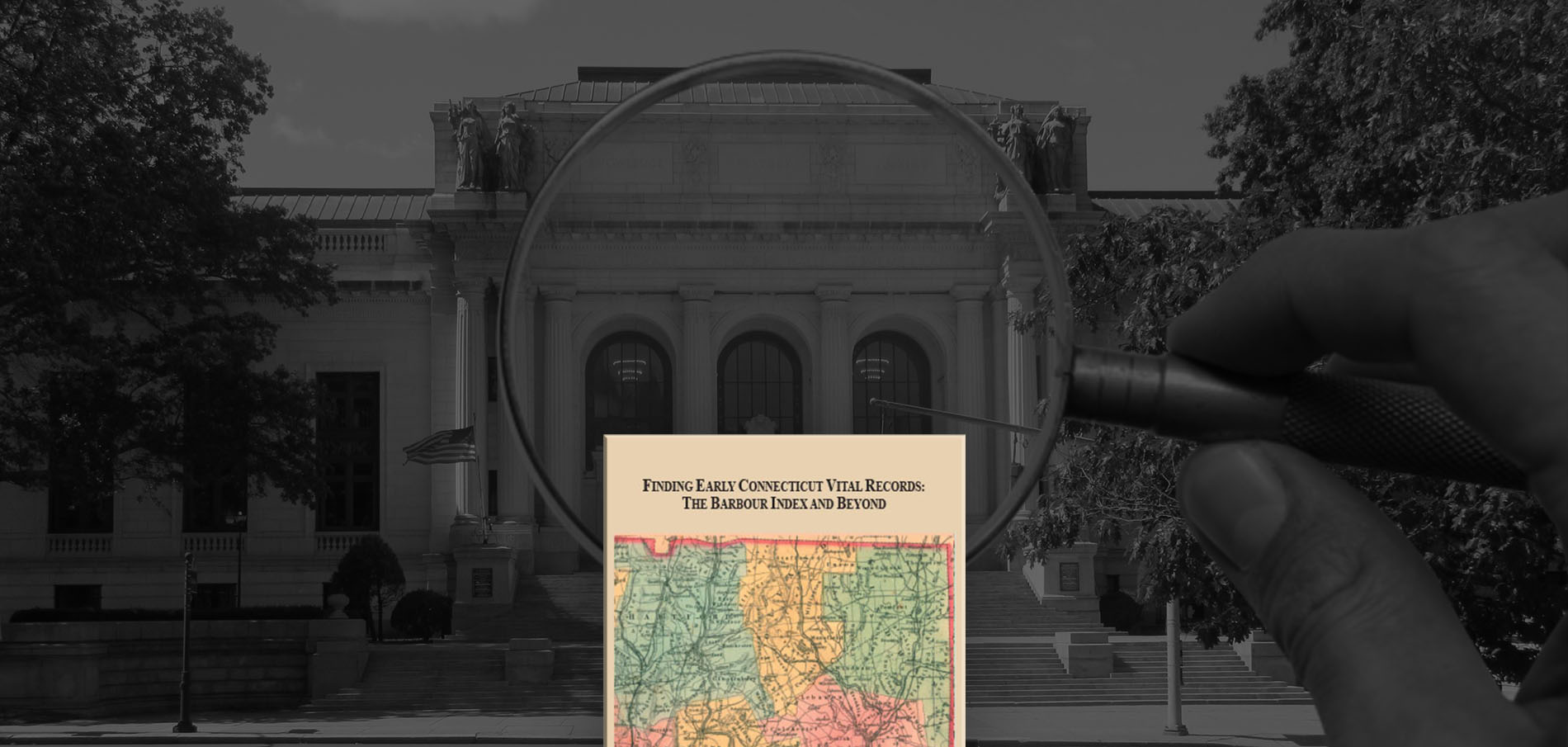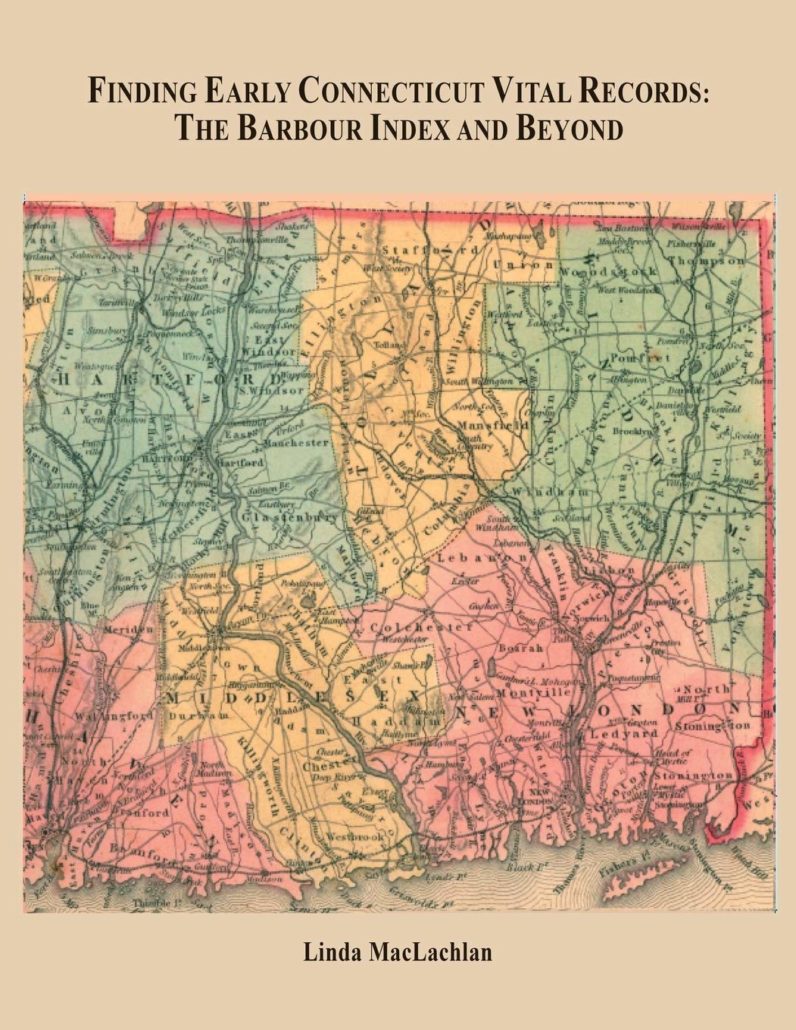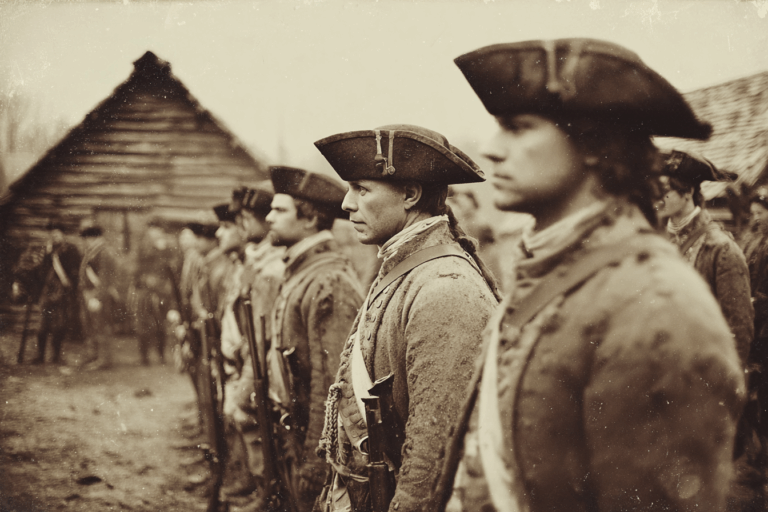
More High Praise for Finding Early Connecticut Vital Records, by Linda MacLachlan
Linda MacLachlan’s book, Finding Early Connecticut Vital Records: The Barbour Index and Beyond, identifies the original sources of the millions of early Connecticut vital records abstracted in the famous Barbour Index of Connecticut Vital Records. It names hundreds of books, manuscripts, and articles not referenced by Barbour, and points the researcher to thousands of additional sources for early Connecticut births, deaths, and marriages. Finding Early Connecticut Vital Records is, in fact, a veritable inventory of Connecticut vital records.
Last month we shared the glowing review Linda’s book found in a recent issue of The American Genealogist (TAG). Today, we are happy to reprint the review our new Connecticut book got from Helen Schatvet Ullman, the dean of Connecticut genealogists. Ms. Ullman’s review appears in the Spring 2020 issue of The New England Historical and Genealogical Register,
pp. 190-191.
“As the author notes in the first sentence of her Introduction, “Every genealogist’s search for pre-Civil War Connecticut vital records should begin with the Barbour Index.” She immediately adds the caveat, “’Resist the temptation to settle for the version of the “Barbour Collection of Connecticut Town Records’ posted on Ancestry.com” There is far more to the Barbour Collection, which is analyzed in the twenty-one-page introduction to this book. Following the introduction (which is essential reading) is a town-by-town finding aid that includes church and cemetery sources, as well as thousands of additional relevant sources. Many of these are available online on sites identified in the listings.
While Ancestry includes data from 118 towns, Barbour’s town-by-town transcripts available at AmericanAncestors.org, cover 137 towns. But the Barbour Index itself—on slips in file drawers at the Connecticut State Library and online at FamilySearch.org—includes 143 towns plus private records. The town transcripts were prepared before the Index itself was compiled. For example, the full contents of the published vital records for Norwich and Woodstock appear in the Index, as well as on slips prepared from the published records of Bolton, Coventry, Enfield, Mansfield, New Haven, and Vernon. The Index also includes private records which do not appear in the online versions on Ancestry and AmericanAncestors.org. If not able to go to the Connecticut State Library, one can look at the Index itself on FamilySearch.org at films 2887 through 2966 and 2984. Unfortunately, although some are indexed on FamilySearch.org, these films are only available online at a Family History Center or affiliate library, such as our own New England Historic Genealogical Society.
However, Barbour is not a primary source. Even Barbour himself said that the abstracts were not checked against the originals. Searchers should check the original record. And there are six towns that are not covered in the Barbour Index at all: Cromwell, Eaton, New Britain, New Fairfield, Seymour, and Trumbull. Sources for these towns are listed in the finding aid.
A few comments on the additional sources. The author points out that ‘Church Records are generally more original sources for births, deaths, and marriages than vital records’ as they are recorded by the minister himself. Many of the cemetery transcriptions noted in the bibliography were made many years before the well-known Hale Collection and may contain clearer readings of the stones. A fourth category of records described here are many collections at the Connecticut State Library, including Barbour’s personal collection. However, many are not available on film or elsewhere. Finally, at the end of the introduction are lists of state and countywide sources not itemized in the town-by-town bibliography.
Anyone search in Connecticut would do well to keep this impressive work handy.”




